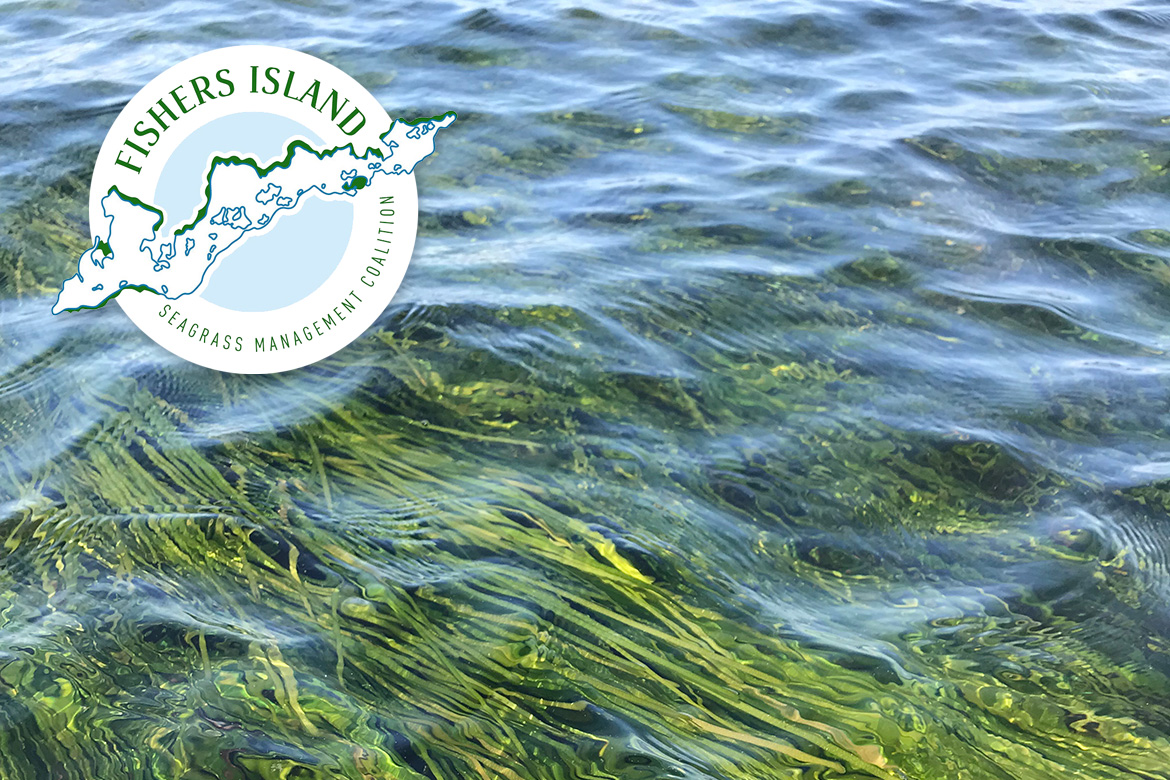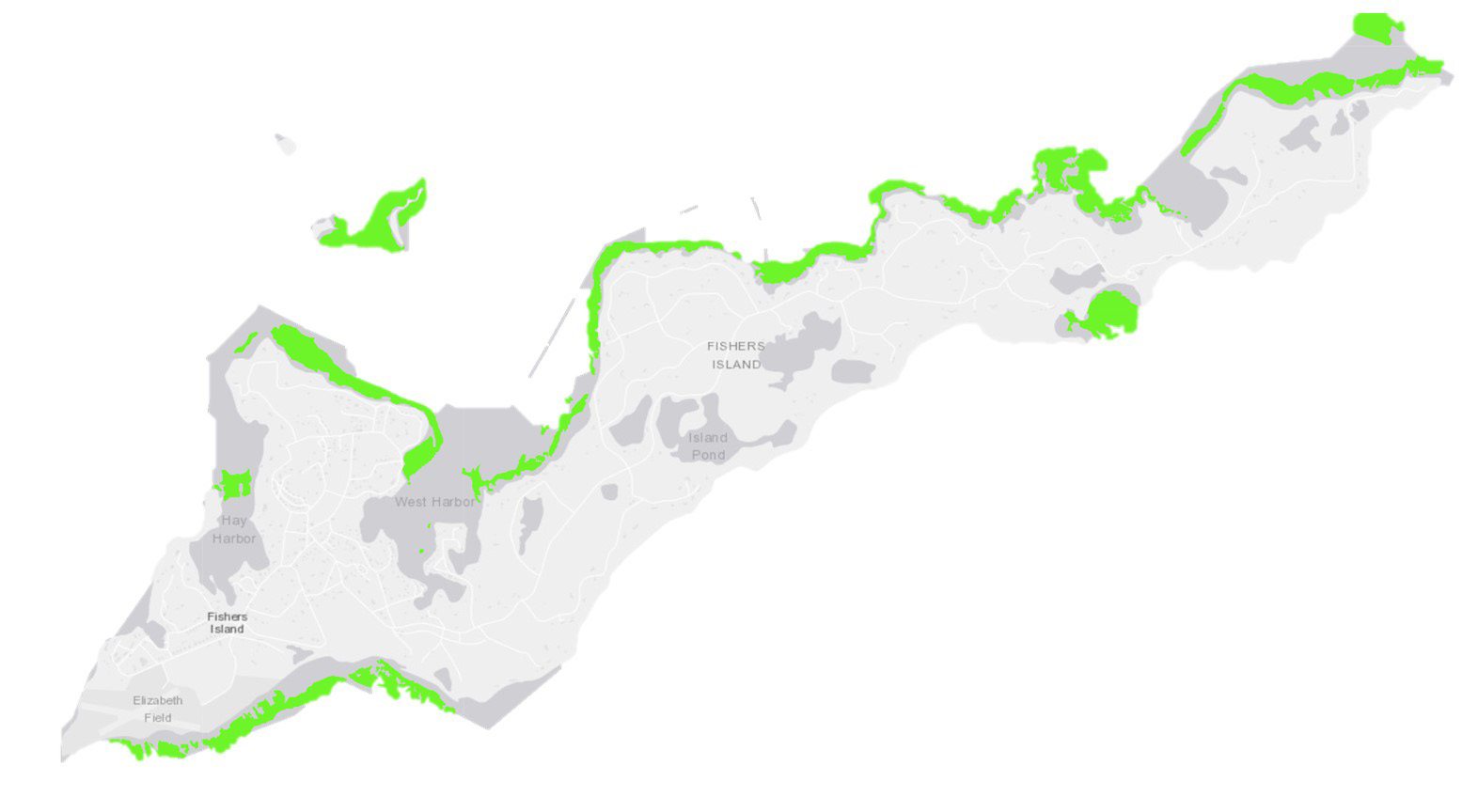The Fishers Island Seagrass Management (FISM) Coalition Update
The Fishers Island Seagrass Management (FISM) Coalition has entered an exciting year in its mission to promote community learning about eelgrass meadows. In August 2022, the FISM Coalition passed an outreach, education, and engagement plan with unanimous support. With this plan, the Coalition acknowledges the power and responsibility of community members in affecting positive change for our marine ecosystems. We know Fishers Island residents want to be environmentally responsible by sustaining our beautiful ecosystems for generations. This season in 2023, we want to empower residents and visitors of the island to make sustainable choices to ensure the integrity of our seagrass and the services it provides.
The Long Island Sound Study wrote a Comprehensive Conservation Management Plan (LISS CCMP) with a vision of a Long Island Sound packed with wildlife, bustling fisheries, and recreational boating access. This vision begins with community members who understand their effect on Long Island Sound and are cognizant of those actions that can harm the marine ecosystem. An essential aspect of this plan is the priority to restore and protect eelgrass. The LISS CCMP set a goal to restore 2000 acres of eelgrass by 2035; unfortunately, recent estimates of eelgrass extent show that LIS has lost more acres than it has gained. Fishers Island, the most abundant source of eelgrass in New York, lost 56 acres of eelgrass between 2012 and 2017. Because this goal is a high priority, the EPA has written a strategy document to address eelgrass in LIS. In the document, the EPA acknowledges the importance of the community involvement and engagement initiatives of the FISM Coalition.
The eelgrass around Fishers Island provides many ecosystem services that residents and visitors enjoy. It provides a complex habitat that can support a great deal of biodiversity. This habitat supports fisheries by giving shelter to juvenile fish food for grazers, and even provides lining for the nests of ospreys.This complex habitat gives snorkelers and divers exciting things to observe. Further adding to recreational enjoyment, eelgrass is an efficient filtration system that offers beachgoers and boaters crystal-clear waters. These meadows pull pollutants, like nitrogen, out of the water column, decreasing algal blooms and low oxygen zones. The eelgrass beds are also a powerful tool to prevent erosion. They reduce the power of currents and waves, preventing sediments’ resuspension and promoting sedimentation within the meadow. Finally, eelgrass sequesters large amounts of carbon in its deposits. Despite only accounting for 0.1% of the coastal ocean, seagrass accounts for 10-18% of carbon sequestration in the ocean. To learn more about these ecosystem services, visit our website: fiseagrass.org.
This year, the FISM Coalition focuses on two main areas causing eelgrass damage. We chose these starting initiatives because these are areas where our community members can have a significant impact. Our first goal is to promote the reduction of fertilizer use on Fishers Island by educating residents about fertilizer timing, amount, alternatives, and the use of native plants. Although these goals will benefit Fishers Island eelgrass, it will also have broader ecosystem benefits of less water pollution (fresh and marine), restoring natural terrestrial biodiversity, and attracting pollinators and wildlife. Learn more about our landscaping initiatives on our Seagrass Safe Landscaping page of our website.
Our second goal addresses the cumulative boating damage Fishers Island residents and visiting boaters can cause to eelgrass beds. Our focus is the damage anchors and propellers create. During anchor fall and retrieval, they uproot 1-4 m2 of eelgrass; this damage increases as hundreds of boaters drop anchor in eelgrass beds. In shallow waters of approximately 10 m and less, boat propellers can dig directly into the sediments and pull up large sections of eelgrass. These scars take almost three years to be repaired. In the meantime, the bare patches allow sediments rich in nitrogen and carbon back into the water column. These sediments shade eelgrass, pollute the water with nitrogen and release greenhouse gases. To learn more about seagrass safe boating and how to become part of the solution, visit the boating section of our webpage.
We hope you are all inspired to learn more about the Save our Seagrass movement that the FISM Coalition is starting. Please visit our website to learn more about us and Fishers Island eelgrass. There are also plenty of ways to become involved with us. Our growing citizen scientist network monitors transects throughout the island to gather data on how our eelgrass beds are used. We also monitor water quality at two sites to assess habitat suitability metrics for eelgrass. Contact our project coordinator, Hannah Vagts, at fishersislandseagrass@gmail.com to get involved in our network or ask her questions about our eelgrass and initiatives. You can also talk to her at the Museum or Island events; she will post information about where community members can find her during the summer, so keep an eye on our news and blog page!



